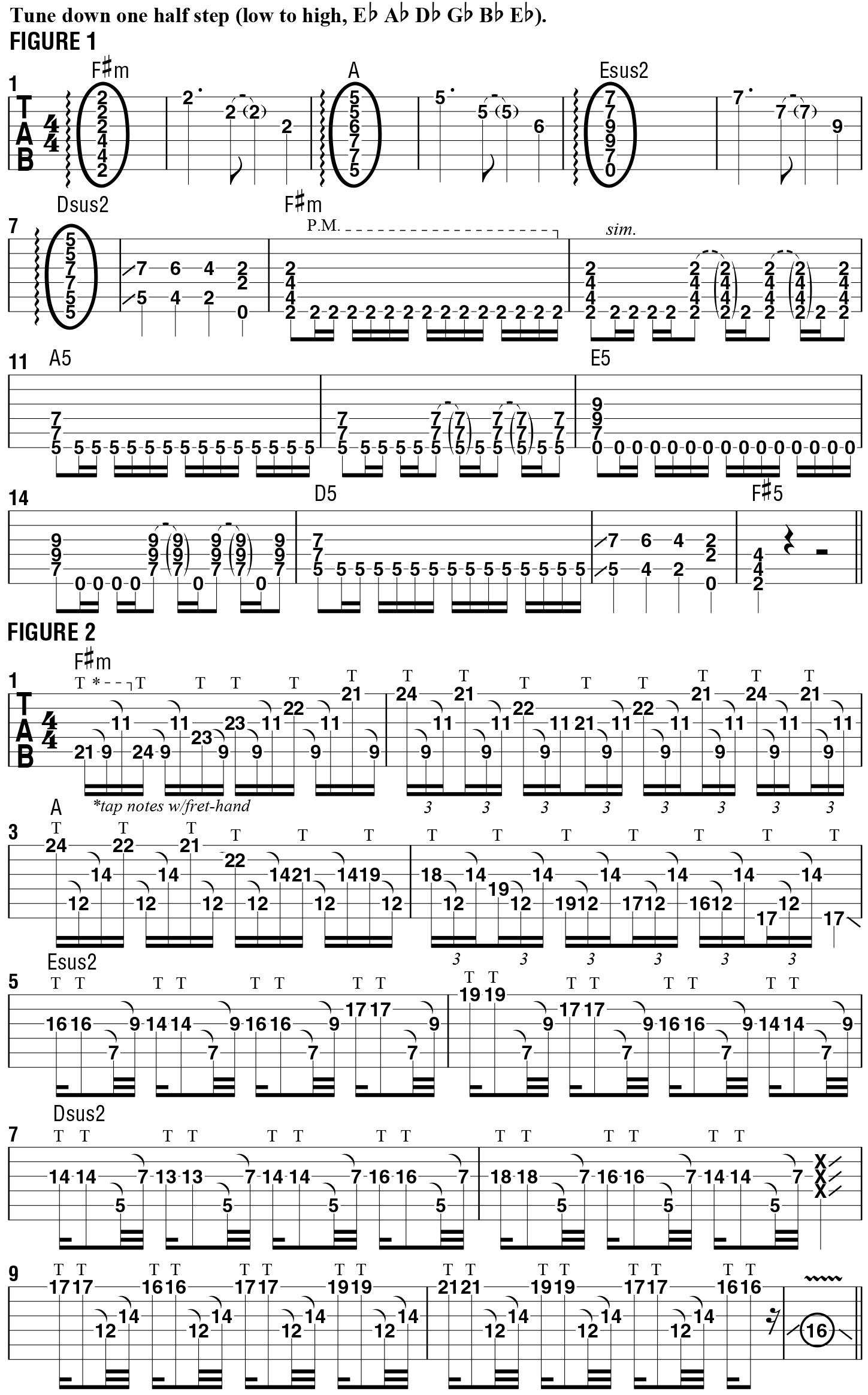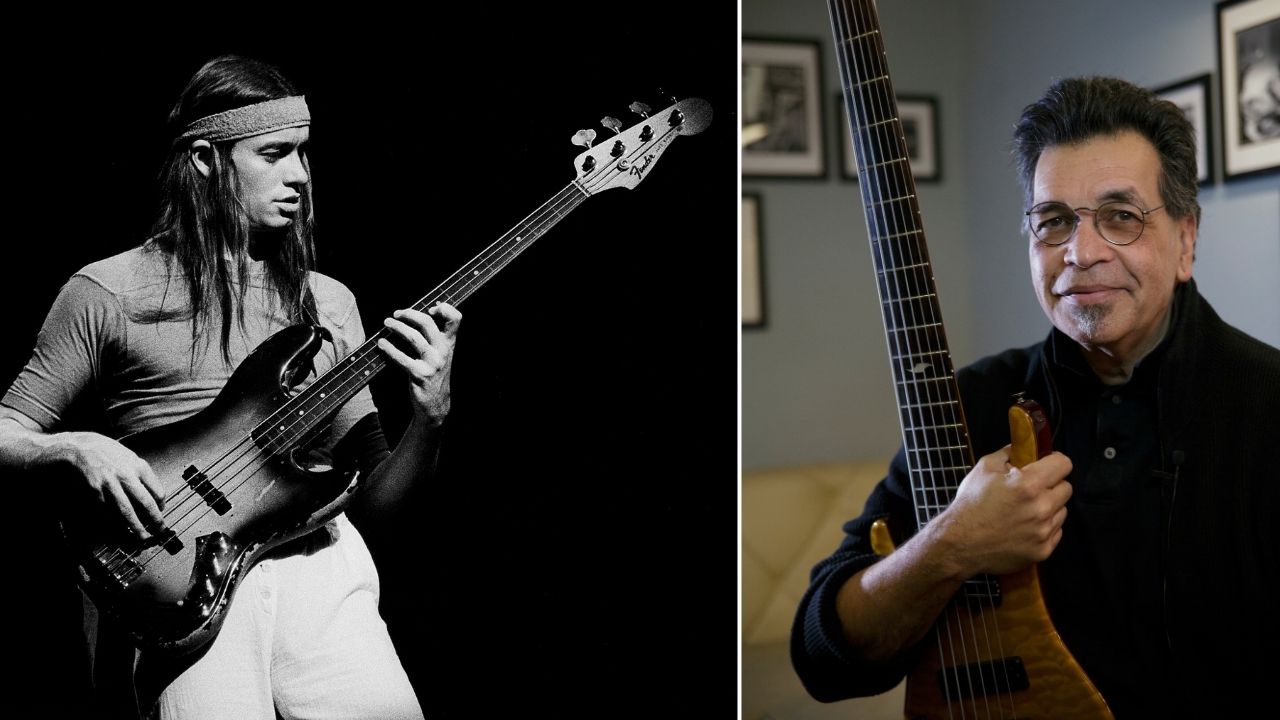Speed Demon: Delving Deeper Into Two-Hand Tapping
Learn more about two-hand tapping in this lesson.
The pattern demonstrated here is derived from a song of mine called “Full Speed X,” which I recorded for Sonic Stomp II. In this passage, the fret hand taps pairs of notes that are an octave apart, moving from the index finger to the ring in a repeating sequence, while the pick hand taps arpeggios and melodic patterns based on specific scales that relate to each chord in the underlying progression. Percussive tapping can, of course, be applied to any chord sequence or scale and any key. Once you have the concept down, I encourage you to investigate other melodic and chordal possibilities, as well as variations on the tapped sequences.
FIGURE 1 illustrates the rhythm part played behind the tapped phrases. In bars 1–7, clean-tone chords are sustained for one bar each, followed by a reverse arpeggiation of the chord tones on the top three strings. The initial pattern ends with a descending octave figure fretted on the A and G strings. In bars 9–15, the chord pattern repeats but is now played with distortion and performed in a faster, syncopated 16th-note rhythm. The riff from bar 8 is repeated in bar 16 to wrap up the phrase.

FIGURE 2 shows the two-hand sequence I tap over the rhythm part. Bars 1 and 2 are played over F#m, and through these two bars, my fret hand repeatedly hammers onto an F# octave shape on the A and G strings in ninth position, moving from the index finger to the pinkie. My pick hand then taps an F#m7 arpeggio “around” the fret-hand octave pattern. Using my index finger to tap, I begin with the root note, F#, on the A string’s 21st fret, followed by the other chord tones of the arpeggiated F#m7 form, as they fall on the adjacent strings, moving, from low to high, to A, C#, F#, A, C# and E. I then move back down, and back up, with the pick-hand tapped figure.
I then apply this approach to each chord in the progression, F#m-A-E(sus2)-D(sus2), with the fret-hand octave mirroring the chord progression with each octave shape, moving from F# to A, E and D.
In bar 2, the melody tapped over the A octave pattern is based on the notes of an A major triad—A, C#, E—with the inclusion of the fourth, D. Over the E octave, I use a different rhythmic syncopation to tap the chord tones of E5—E and B—with the inclusion of the fourth, A. Over the D octave, I forgo the use of chord tones for the tapped figure, instead using the notes of the D Lydian mode (D E F# G# A B C#) to craft a melodic line.
All the latest guitar news, interviews, lessons, reviews, deals and more, direct to your inbox!
